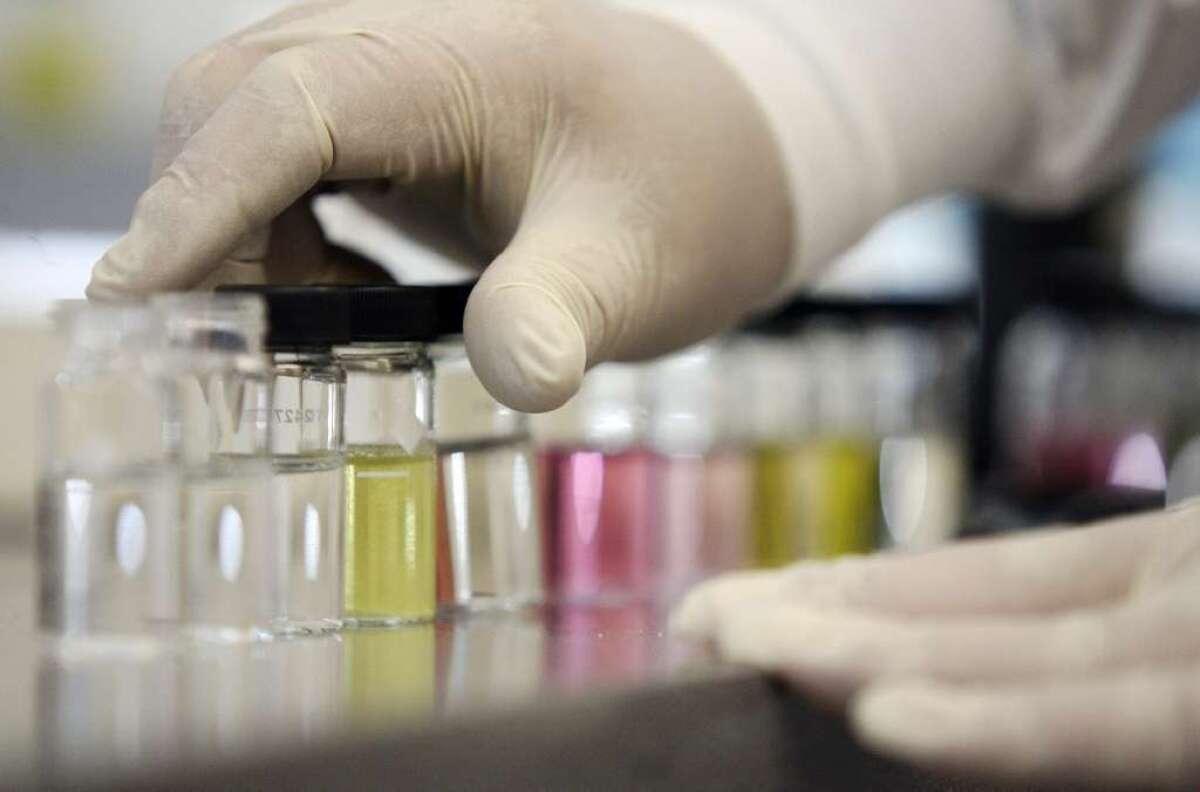Glendale prepares for long term cost of chromium 6 removal

- Share via
After overseeing a multi-million dollar project to research high-tech methods for stripping ground water of the cancer-causing element chromium 6, Glendale officials this week set aside hundreds of thousands more to figure out how to make the process cheaper.
The move comes just weeks before the California Department of Public Health is scheduled to release a draft proposal that would set a limit for how much chromium 6 — made famous by the movie “Erin Brokovich” — will be allowed in public drinking water.
That level will largely be based on the research overseen by Glendale Water & Power, which cost roughly $9 million and spanned more than 10 years. Much of that was paid for by state grants and contributions from a group of polluters, many of whom have long since left the San Fernando Road corridor, where the bulk of contamination took place.
Whatever the proposed level, getting the systems in place to bring drinking water into compliance is expected to be expensive.
In 2011, the California Office of Environmental Health Hazard Assessment set a goal of getting chromium 6 contamination down to .02 parts per billion — a goal that, despite exhaustive research, methods studied by Glendale were never able to reach.
The amount of chromium 6 in Glendale’s water currently is currently below 5 parts per billion, after filtering and then blending with uncontaminated imported water from the Metropolitan Water District of Southern California.
By law, the state Department of Public Health must set the new limit as close to the goal of .02 parts per billion.
Ron Owens, a spokesman for the agency, said in an email that officials were “committed to ensuring all Californians have access to safe drinking water.”
But the new limit must also take into account how economically feasible it will be for utilities to achieve.
According to a report released last year, various methods can reduce the chromium level to 1 part per billion, but they come with hefty price tags and their own unique drawbacks.
One removal method for a system that can handle a population of 10,001 to 100,000 could cost $27 million to install, operate and maintain over 20 years, according to initial estimates released in August.
The City Council on Tuesday approved spending $314,980 to research ways to bring the costs of installing a removal system.
The method uses resin to strip chromium, but it has side effects, such as formaldehyde and uranium byproducts. A study on a new resin-based system without those byproducts is expected to be completed at year’s end.
The resin has been the most successful at getting close to the public health goal, but there are alternatives. One uses iron to reduce the chromium and then filter it out, but is less effective.
-- Brittany Levine, brittany.levine@latimes.com
Follow on Google+ and on Twitter: @brittanylevine.
ALSO:
Convicted peeper busted again in Glendale
Jobless rates increase in Burbank, Glendale
Median price for homes in Glendale drops; inventory still light